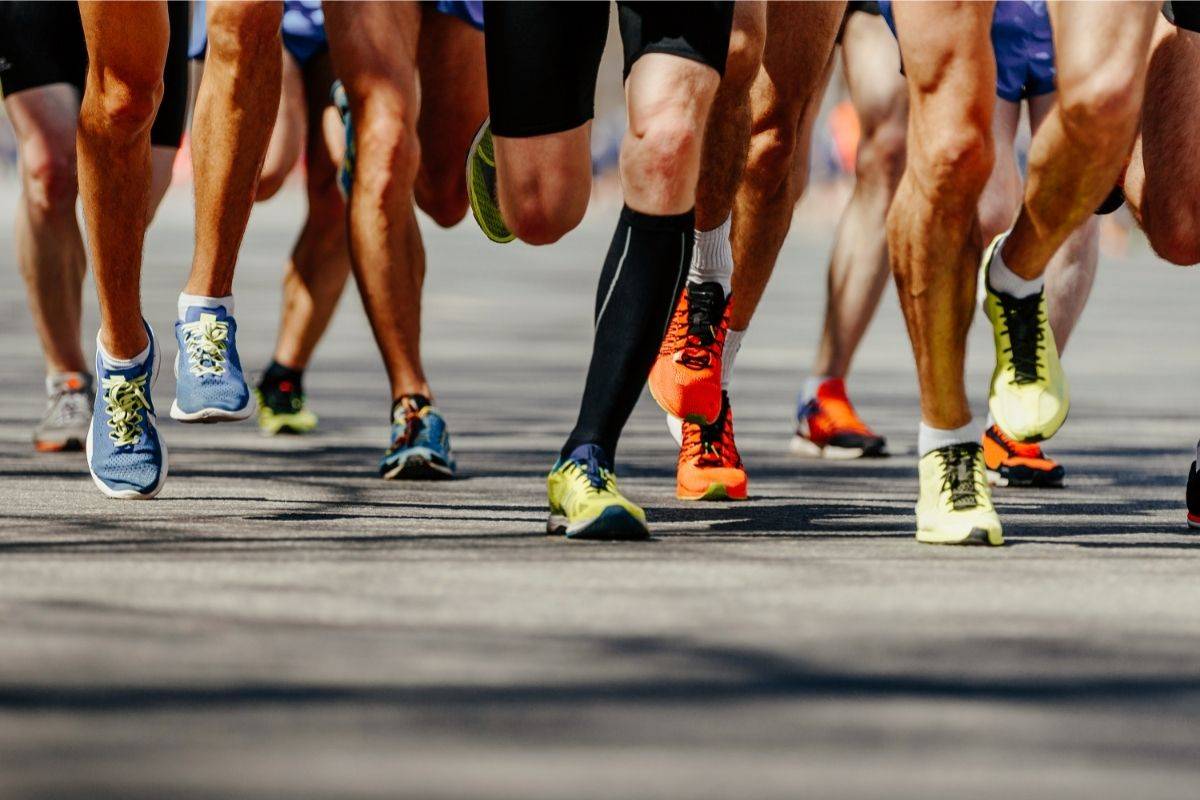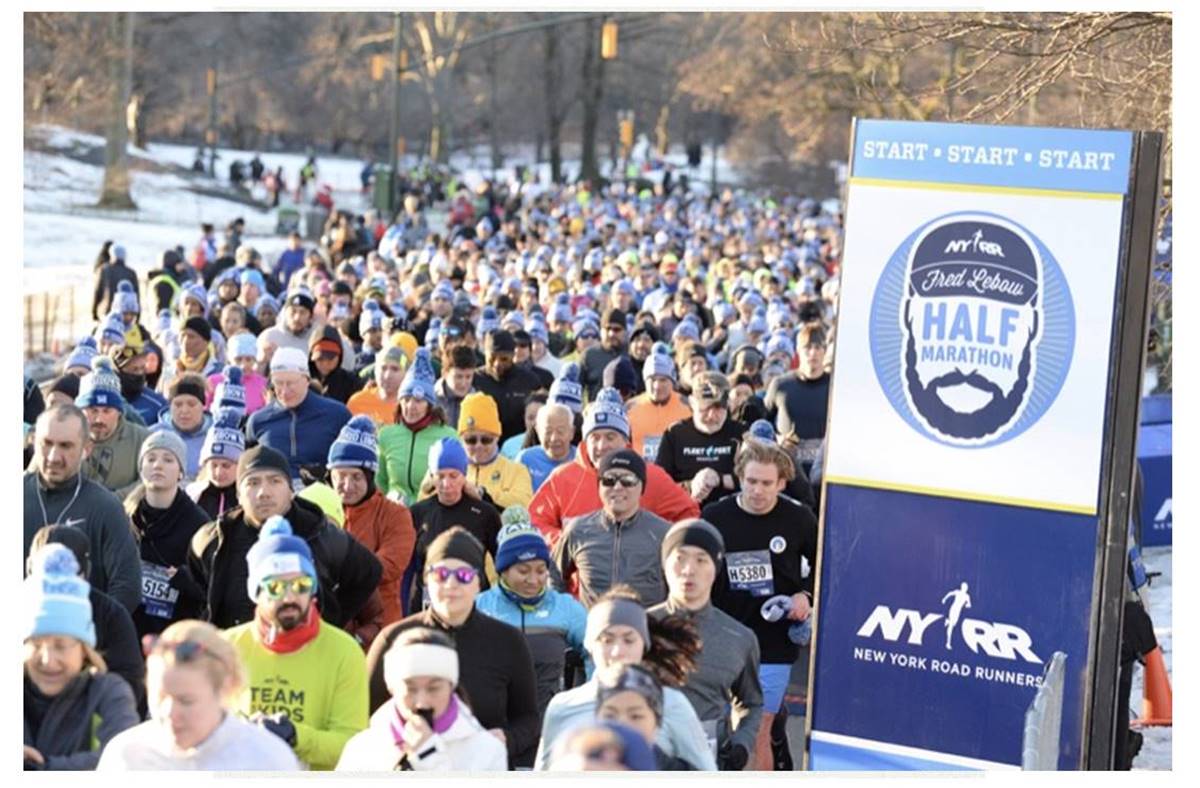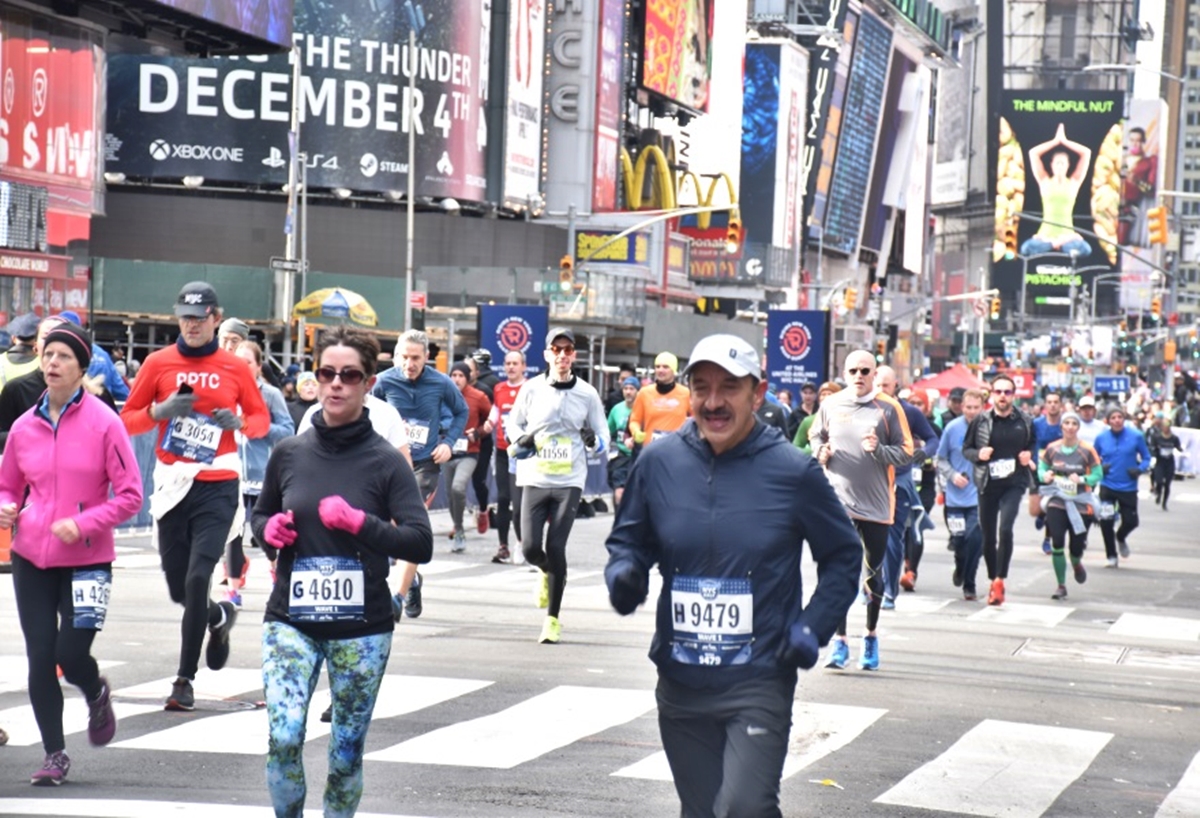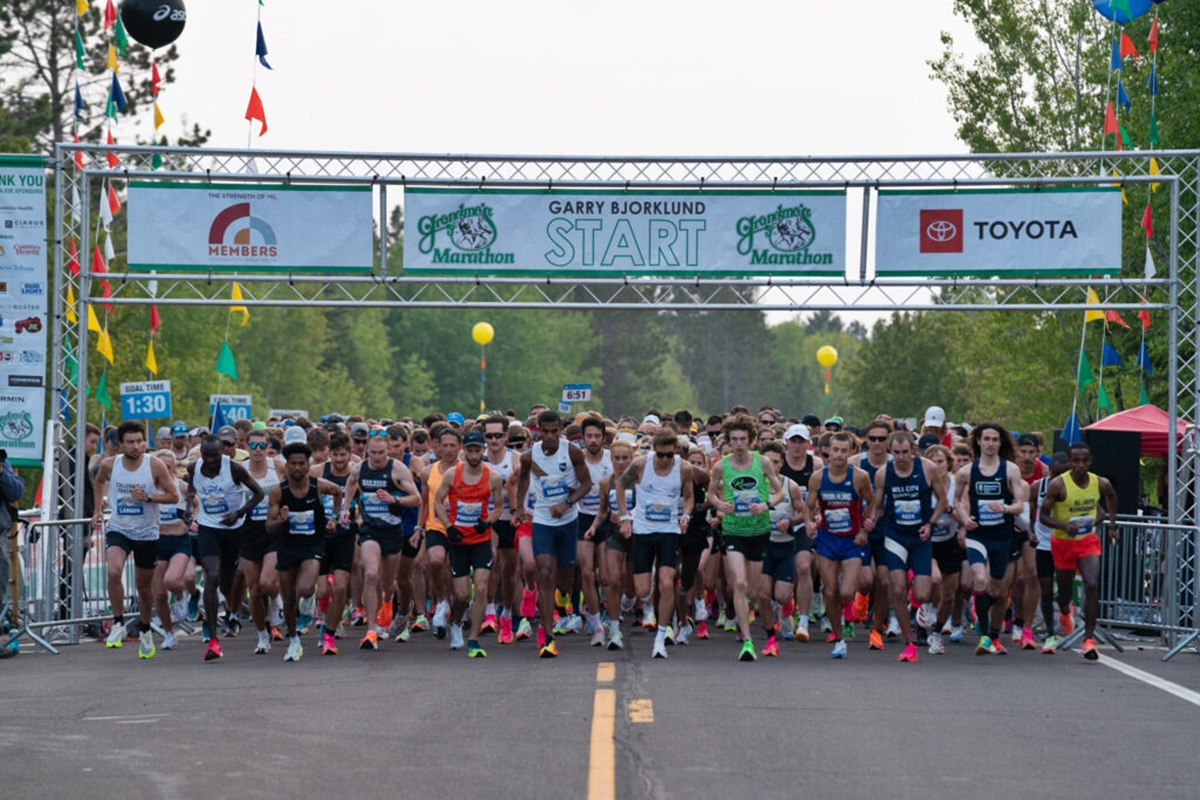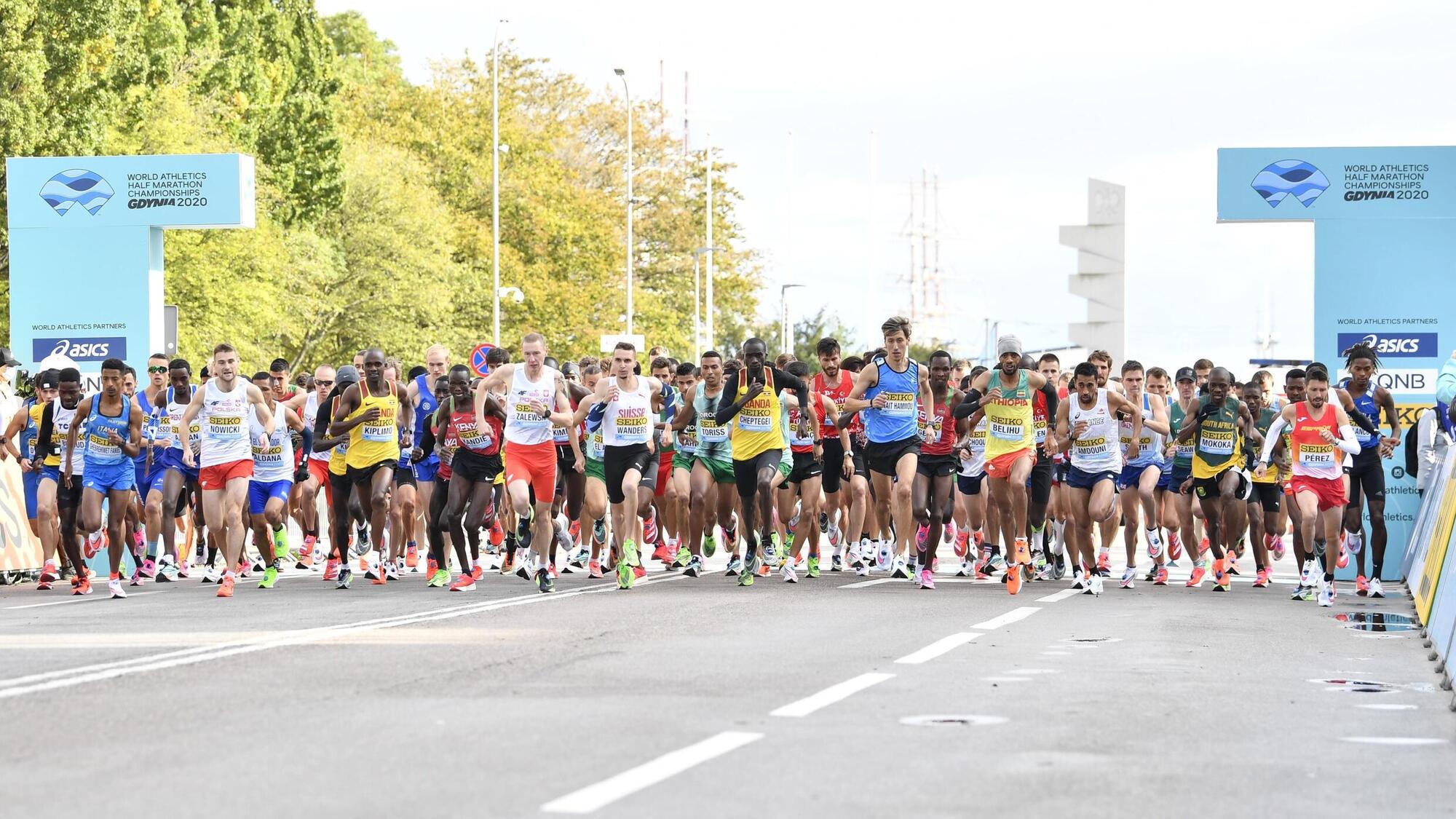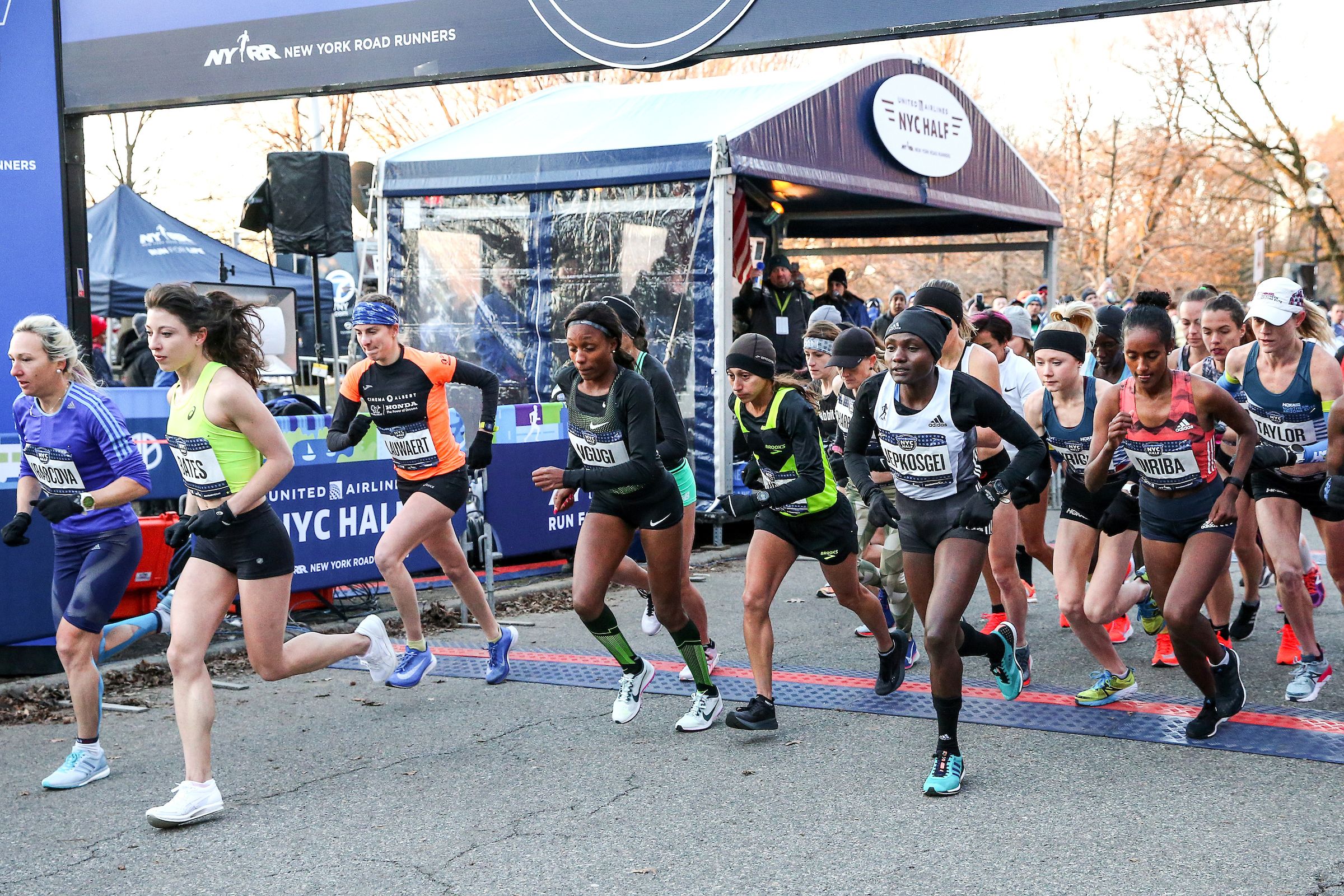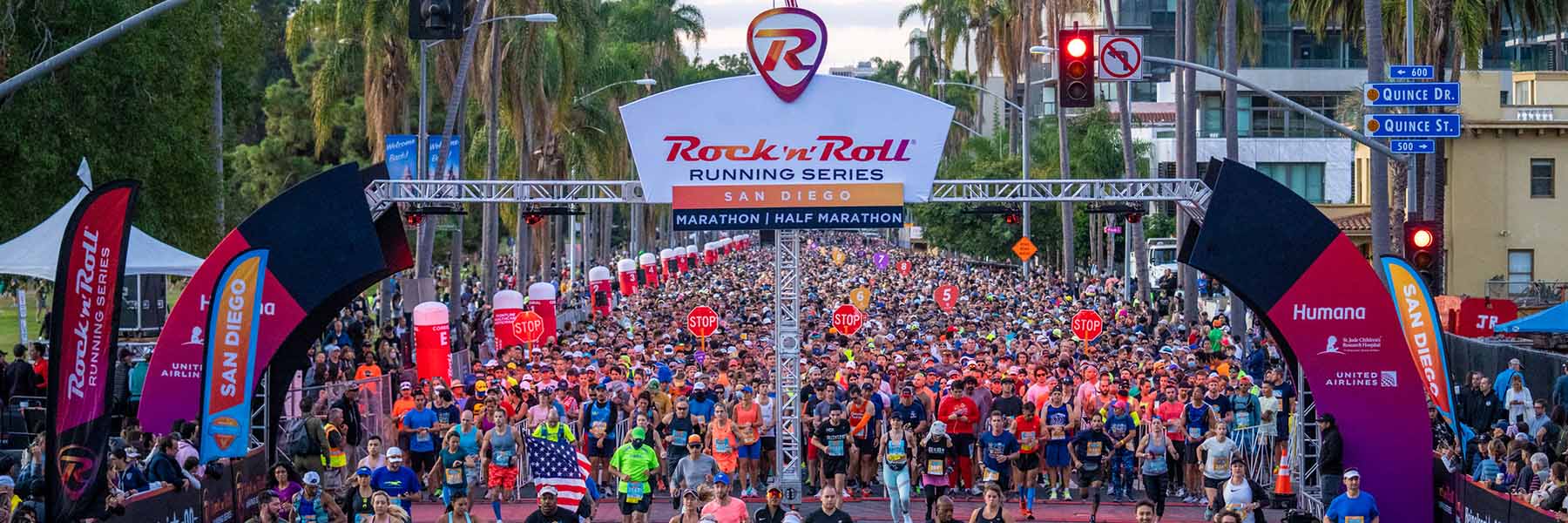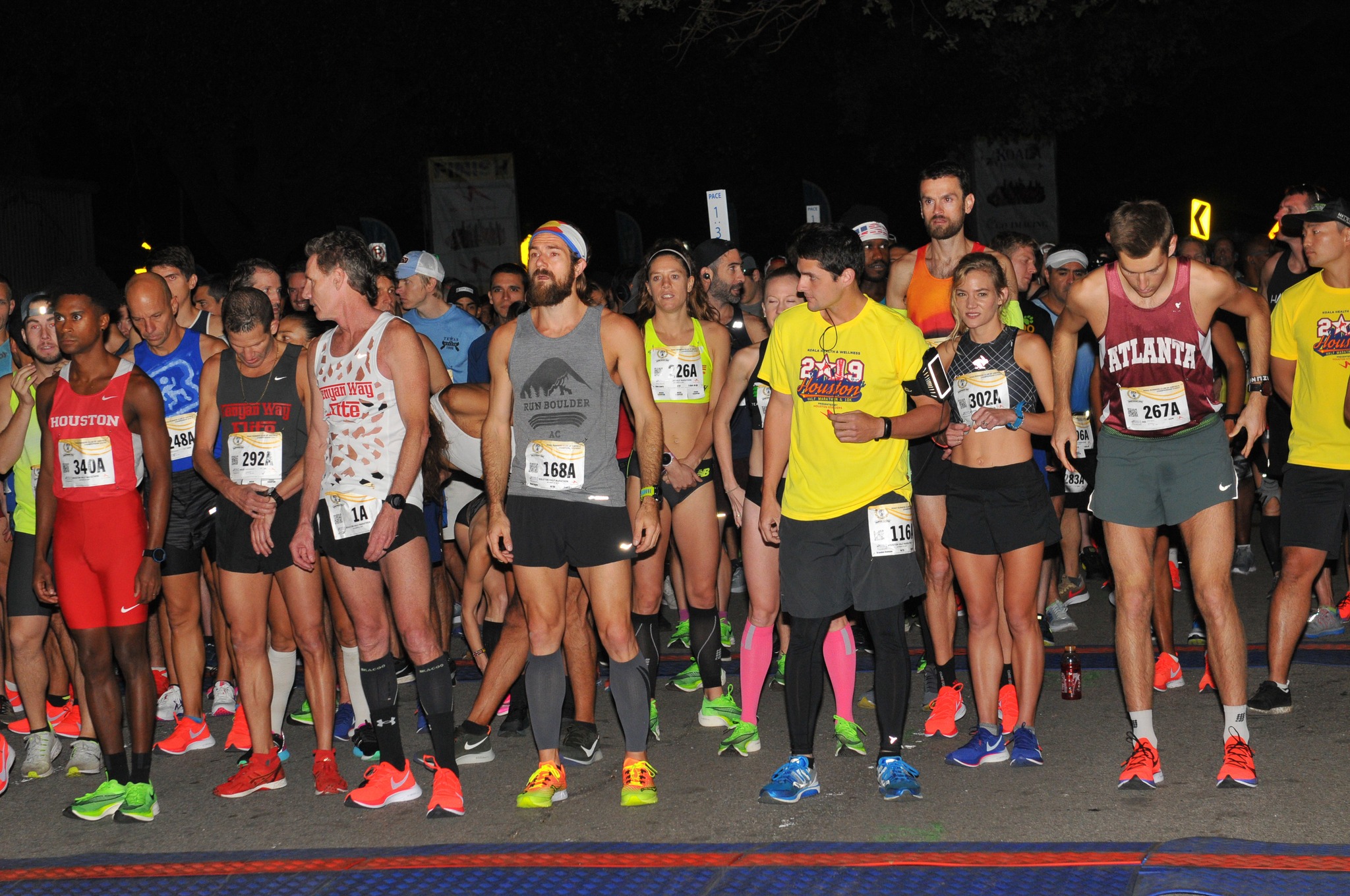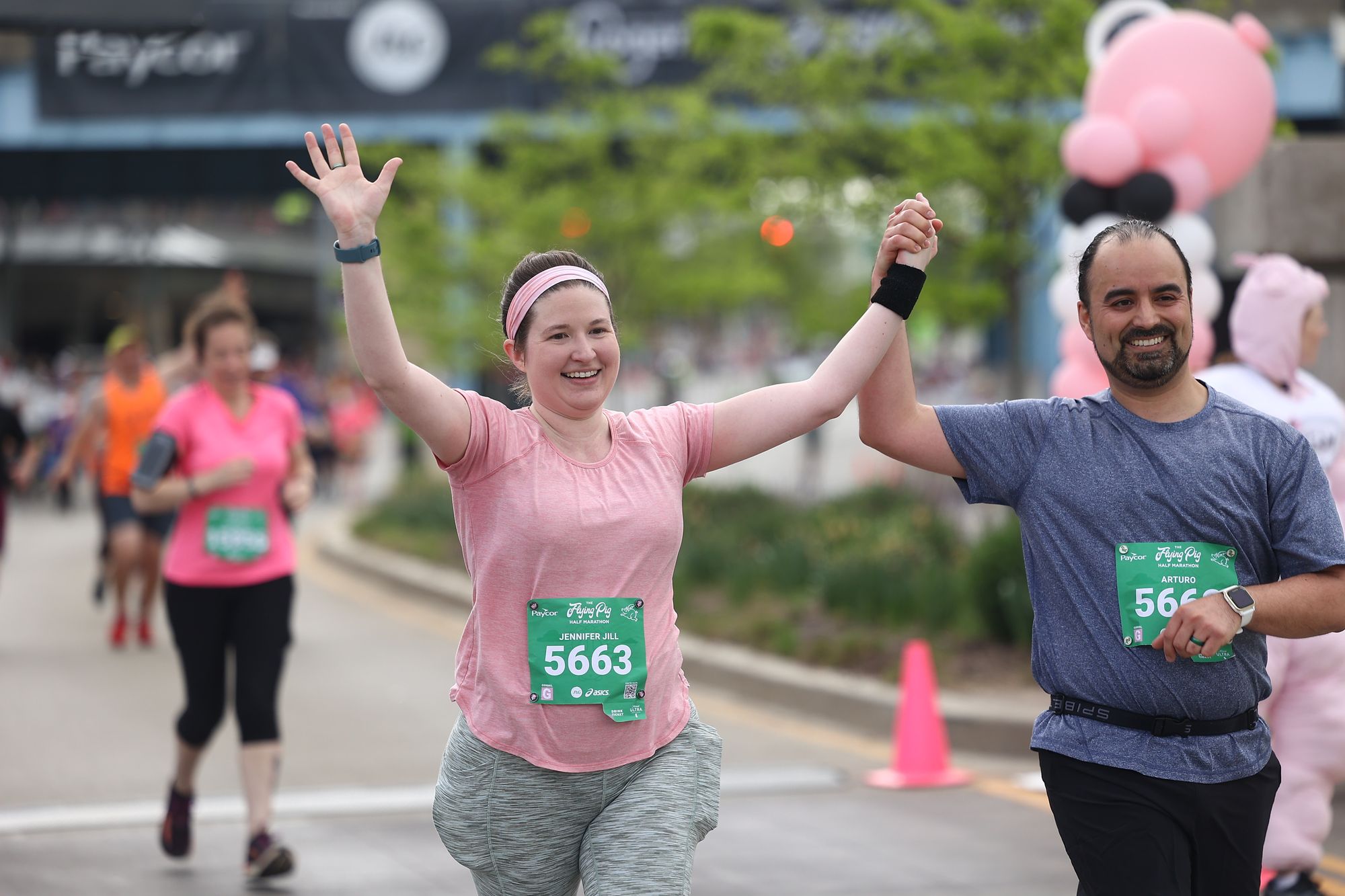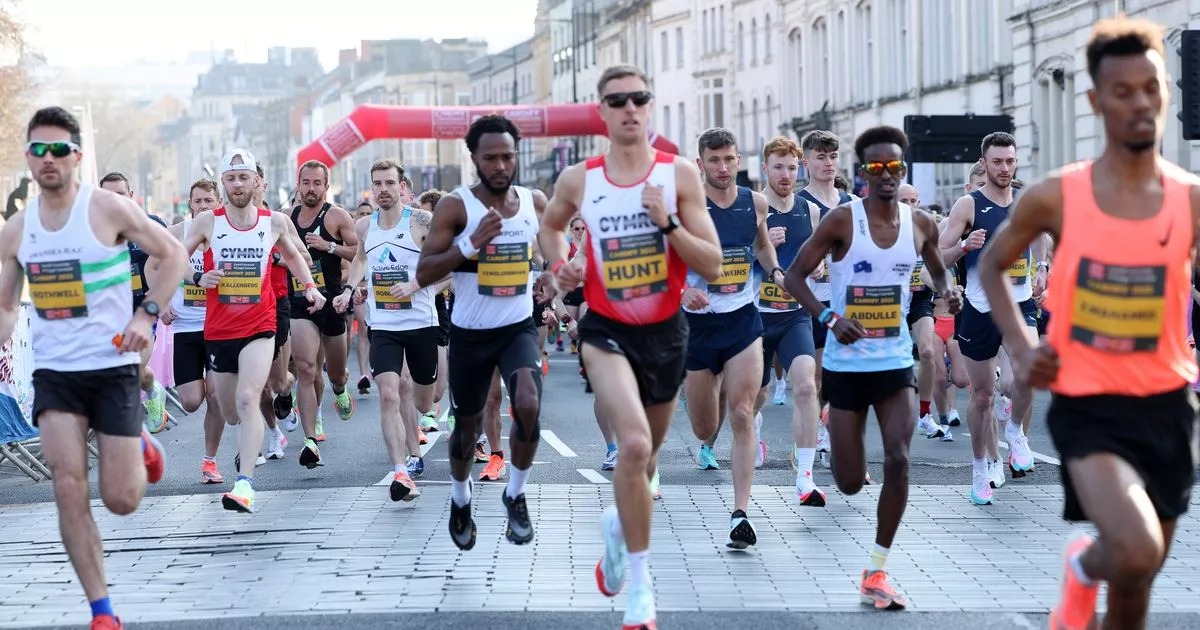Home>Misc>Featured>What Is The Slowest Recorded Time For The Cedar City Half Marathon


Featured
What Is The Slowest Recorded Time For The Cedar City Half Marathon
Modified: January 22, 2024
Discover the featured Cedar City Half Marathon with its slowest recorded time. Learn more about this challenging race and the incredible endurance of its participants.
Introduction
Welcome to the world of marathon running, where athletes push their physical and mental limits in pursuit of personal accomplishment. In the realm of marathons, the Cedar City Half Marathon stands as a prominent event that attracts runners from all walks of life. While many participants strive for record-breaking times, there is also an inherent fascination with the slowest recorded time in the history of the race.
The Cedar City Half Marathon, held annually in the picturesque city of Cedar City, Utah, has established itself as a challenging yet rewarding race. Participants navigate a scenic course that winds its way through stunning landscapes and showcases the natural beauty of the region. From seasoned runners seeking personal bests to first-timers hoping to complete their first half marathon, the event welcomes all individuals who have a passion for running.
Within the realm of marathon races, there is often a focus on the elite athletes who display incredible speed and endurance. Their thrilling performances inspire awe and admiration. However, the slowest recorded time in the Cedar City Half Marathon offers a unique perspective on the event. It sheds light on the diverse range of participants and provides insight into the challenges faced by those who strive to complete the half marathon at a more leisurely pace.
Before diving into the details of the slowest recorded time in the Cedar City Half Marathon, it is important to place this achievement within the broader context of race times. By examining the range of finish times, we can better appreciate the effort and dedication that every participant brings to the event, regardless of their finishing position.
In the upcoming sections, we will explore the background of the Cedar City Half Marathon and delve into the slowest recorded time in its history. Moreover, we will discuss the various factors that may contribute to slower race times and the implications of this achievement within the running community. Join us on this journey as we uncover the inspiring stories behind the slowest recorded time in the Cedar City Half Marathon.
Background of the Cedar City Half Marathon
The Cedar City Half Marathon has a rich history that dates back several years. Organized by dedicated volunteers and supported by local sponsors, this annual event has become a staple in the running community of Cedar City, Utah. The half marathon attracts participants from across the country who are drawn to the challenging course and the natural beauty of the region.
The inception of the Cedar City Half Marathon can be traced back to the vision of a group of passionate runners who wanted to create an event that would both showcase the scenic landscapes of Cedar City and provide a platform for runners to challenge themselves. What started as a small-scale race quickly gained traction, and over the years, it has grown into a renowned event that draws runners of all abilities.
The course of the Cedar City Half Marathon is carefully designed to offer participants a unique and memorable running experience. Runners traverse a mix of urban and rural terrains, passing through quaint neighborhoods, picturesque parks, and stunning vistas. The undulating terrain presents its own set of challenges, with rolling hills and elevation changes that test the physical and mental stamina of the participants.
One of the defining aspects of the Cedar City Half Marathon is its inclusivity. The race welcomes runners of all ages and abilities, offering several participation categories and divisions. From competitive athletes aiming for a podium finish to recreational runners seeking personal milestones, the event provides a supportive and encouraging environment for everyone.
Furthermore, the Cedar City Half Marathon is not just about the race itself; it is a celebration of the local community. The event brings together residents, volunteers, and spectators, fostering a sense of camaraderie and unity. The race serves as a platform to showcase the city’s hospitality, culture, and natural wonders, leaving a lasting impression on both participants and visitors.
Over the years, the Cedar City Half Marathon has gained recognition as a well-organized and inspiring event. The dedication of the organizers, the support of the local community, and the stunning backdrop of Cedar City’s landscapes all contribute to its continued success.
Now that we have a better understanding of the background and significance of the Cedar City Half Marathon, let us delve into the fascinating story of the slowest recorded time in its history. Discover the remarkable journey of the participant who achieved this feat and the factors that may have influenced their race performance.
Overview of Race Times
The Cedar City Half Marathon attracts a diverse range of participants, each with their own unique running abilities and goals. As with any race, there is a wide range of finishing times that vary based on factors such as age, fitness level, and experience. Understanding the range of race times provides valuable insight into the overall performance of participants in the Cedar City Half Marathon.
At the front of the pack, elite runners showcase their exceptional speed and endurance, completing the half marathon in impressive times. These athletes often aim to break personal records or compete for a podium finish. Their dedication to training, years of experience, and natural talent allow them to finish the race well ahead of the average participant.
For the majority of participants, however, the focus is on personal achievement and enjoying the experience of running the half marathon. Many individuals set goals based on their current fitness levels and use the event as a benchmark for their progress. These participants may have finishing times that fall within a wider range, reflecting the diversity of abilities and individual circumstances.
On the faster end of the spectrum, participants who are in good physical condition and have dedicated significant time to training may complete the Cedar City Half Marathon in under two hours. This achievement requires consistent training, proper nutrition, and mental resilience. These runners often have a strategic approach to pacing themselves throughout the race, allowing them to maintain a steady speed and minimize fatigue.
As we move down the range of race times, finishing times between two to three hours are common among recreational runners and those who enjoy running as a hobby. These individuals may have varying levels of experience in long-distance running and may focus more on the enjoyment of the event rather than pushing for a fast finish.
On the slower end of the spectrum, participants who complete the Cedar City Half Marathon in over three hours demonstrate determination and resilience. These individuals may face unique challenges, such as physical limitations or health conditions, that require them to approach the race with a different mindset. They prioritize completing the race and overcoming personal obstacles, rather than aiming for a specific finishing time.
Overall, the range of race times in the Cedar City Half Marathon highlights the inclusivity and diversity of participants. Whether crossing the finish line under two hours or taking their time to reach the end, each participant’s journey is a testament to their commitment and love for the sport. Now, let’s explore the fascinating story behind the slowest recorded time in the history of the Cedar City Half Marathon and the factors that may have contributed to this unique achievement.
Slowest Recorded Time in Cedar City Half Marathon History
When it comes to marathon races, the focus is often on the fastest runners and new records being set. However, it is essential to acknowledge and celebrate all participants, including those who achieve the slowest recorded times. In the history of the Cedar City Half Marathon, there is a story of determination and perseverance behind the slowest recorded time.
The slowest recorded time in the Cedar City Half Marathon history stands as a testament to the indomitable spirit of a participant who pushed through challenges to complete the race. While their finishing time may not match the speed of the race’s elite runners, their achievement holds equal significance in terms of personal triumph and overcoming obstacles.
The circumstances surrounding the slowest recorded time can vary and are often influenced by a combination of factors. It could be a first-time participant who faced unforeseen challenges on race day or an individual who battled injuries or health conditions throughout the race. Whatever the reasons, completing a half marathon requires mental and physical strength, regardless of the time it takes.
It is vital to highlight that the slowest recorded time in the Cedar City Half Marathon is not indicative of a lack of effort or dedication. On the contrary, it represents a monumental undertaking in which the participant demonstrated incredible perseverance and resilience. It takes significant courage to continue moving forward when faced with fatigue, doubt, and the desire to simply give up.
The slowest recorded time paints a vivid picture of the participant’s determination to reach the finish line, regardless of the difficulties encountered along the way. Their journey undoubtedly serves as an inspiration to others who may face their own challenges during the race or in life in general.
While it is natural to focus on faster finish times, it is equally important to celebrate and applaud those who complete a marathon at a slower pace. Their story reminds us that the true essence of marathon running lies in pushing personal boundaries, setting and achieving individual goals, and experiencing the joy of crossing the finish line.
Now that we have explored the slowest recorded time in the Cedar City Half Marathon history, let us shift our focus to the factors that may contribute to slower race times. By understanding these factors, we can gain a deeper appreciation for the diverse experiences and challenges faced by participants in marathons.
Factors That May Contribute to Slow Race Times
Several factors can contribute to slower race times in the Cedar City Half Marathon. While each participant’s journey is unique, understanding these factors can provide insights into the challenges faced by individuals striving to complete the race at a more leisurely pace.
1. Fitness Level: Participants who have lower fitness levels may find it challenging to maintain a faster pace throughout the race. Lack of consistent training, inadequate conditioning, or limited prior running experience can impact overall speed and endurance.
2. Age: Age plays a significant role in determining race times. As individuals get older, their physical abilities may decline, leading to a slower pace. However, it is important to remember that age is just a number, and older participants often demonstrate remarkable determination and resilience.
3. Injuries: Pre-existing injuries or physical limitations can greatly impact race times. Participants who are recovering from injuries may need to adopt a more cautious approach, taking breaks, or adjusting their pace to ensure their well-being during the event.
4. Health Conditions: Individuals with underlying health conditions may face additional challenges during the race. Conditions such as asthma, heart conditions, or chronic pain can affect performance, requiring participants to adapt their strategy to accommodate their specific needs.
5. Weather Conditions: Adverse weather conditions such as extreme heat, strong winds, or heavy rain can make running more challenging and impede overall race times. Participants may need to slow down or conserve energy to ensure their safety and well-being.
6. Mental Resilience: The mental aspect of running cannot be overlooked. Participants who experience self-doubt or mental fatigue may find it harder to maintain a faster pace. It takes immense mental strength to push through the discomfort and fatigue, especially as the race progresses.
7. Personal Goals: Some participants prioritize personal enjoyment and the experience of the race over achieving a fast time. Their focus may be on completing the half marathon at their own pace, enjoying the scenery, and embracing the journey rather than chasing a specific finish time.
8. Strategy and Pacing: Participants may choose to adopt a more conservative approach to pacing themselves throughout the race. They may opt for a run-walk strategy or take more frequent walk breaks to manage fatigue and optimize performance.
It is essential to recognize that slow race times do not diminish the effort, dedication, or triumph of the participants. Completing a half marathon requires immense commitment, and those who strive to overcome their personal challenges and reach the finish line should be celebrated.
Now that we have explored the factors that can contribute to slower race times, let’s discuss the implications of the slowest recorded time in the Cedar City Half Marathon and its significance within the running community.
Implications of Slowest Recorded Time
The slowest recorded time in the Cedar City Half Marathon holds significant implications within the running community. It serves as a powerful reminder of the diverse range of participants who take on the challenge of completing a half marathon and the remarkable achievements that can be accomplished regardless of race times.
1. Inclusivity: The slowest recorded time highlights the inclusive nature of marathon events. It emphasizes that marathons are not solely for elite athletes seeking record-breaking times, but also for individuals of varying abilities, ages, and fitness levels who have their own unique goals and challenges.
2. Overcoming Obstacles: The slowest recorded time symbolizes the triumph over obstacles. It demonstrates the determination, resilience, and perseverance of participants who push through physical and mental barriers to complete the race, inspiring others to overcome their own challenges.
3. Personal Achievement: Completion of a marathon, regardless of the time, is a significant personal achievement. The slowest recorded time celebrates the commitment and effort of participants who set out on the journey to the finish line, demonstrating that success is not solely measured by speed, but by personal dedication and determination.
4. Motivation and Inspiration: The slowest recorded time can serve as a source of motivation and inspiration for others. It showcases that marathon running is not solely about competition and speed, but about personal growth, improving individual performance, and embracing the journey rather than focusing solely on the destination.
5. Supportive Community: The slowest recorded time reinforces the importance of fostering a supportive running community. Participants who achieve slower race times often receive encouragement and support from fellow runners, spectators, and event organizers, fostering a sense of inclusivity and camaraderie.
6. Challenging Preconceptions: The slowest recorded time challenges prevailing preconceptions about success in marathon running. It encourages a shift in perspective, where value is placed not solely on finish times, but on the courage, determination, and personal growth that comes from undertaking and completing a marathon.
7. Celebrating Every Finisher: Emphasizing the slowest recorded time encourages the celebration of every participant who crosses the finish line. It promotes a culture of appreciation and respect for the efforts and achievements of all individuals, irrespective of their race times, and encourages a sense of unity among runners.
The slowest recorded time in the Cedar City Half Marathon redefines what it means to participate in a marathon. It celebrates the unique journeys, personal growth, and triumph over challenges experienced by runners at every pace. It is a reminder that marathons are not solely about speed, but about the shared passion for running and the sense of fulfillment that comes from crossing the finish line.
As we conclude our exploration of the slowest recorded time in the Cedar City Half Marathon, we are reminded of the beauty and inspiration that lies within each participant’s journey, regardless of their finishing time.
Conclusion
The Cedar City Half Marathon encompasses a vibrant and diverse running community, where participants of varying abilities, ages, and backgrounds come together to push their limits and achieve personal triumphs. While the focus often lies on the fastest runners and record-breaking times, the slowest recorded time holds equal significance in honoring the determination, perseverance, and remarkable stories of those who overcome their own unique challenges.
Throughout this article, we have explored the background of the Cedar City Half Marathon, gaining insights into its rich history and the scenic course that attracts runners from across the country. We have also discussed the range of race times, highlighting the diverse performances achieved by participants at different fitness levels and stages of their running journey.
The slowest recorded time in the Cedar City Half Marathon serves as a testament to the indomitable spirit and accomplishments of individuals who push through obstacles to complete the race. It challenges societal norms and underscores the importance of inclusivity, personal achievement, and the power of overcoming challenges.
Through the examination of factors that can contribute to slower race times, we have gained a deeper appreciation for the diverse experiences and circumstances that participants face. From varying fitness levels and age-related factors to injuries, health conditions, and personal goals, each participant brings their unique journey to the starting line.
Furthermore, the slowest recorded time in the Cedar City Half Marathon has implications that reach beyond the individual achievements. It reinforces the importance of a supportive running community, challenges preconceived notions of success, and inspires others to pursue their own goals regardless of race times. It serves as a reminder that while the pursuit of speed may dominate the narrative, the true essence of marathon running lies in personal growth, overcoming challenges, and celebrating every finisher.
As we conclude our exploration of the slowest recorded time in the Cedar City Half Marathon, we are reminded that this event is more than just a race. It is an inspiring journey of dedication, resilience, and joy that brings together participants, volunteers, and spectators in celebration of the human spirit.
So, whether you are a seasoned runner aiming for a personal best or a first-time participant taking your first steps towards completing a half marathon, the Cedar City Half Marathon offers an unforgettable experience. Embrace the challenge, appreciate the journey, and celebrate the remarkable stories that emerge from every corner of the running community.
